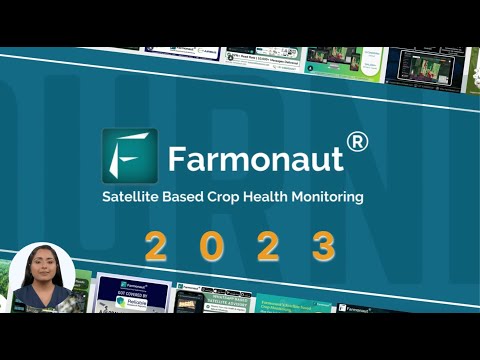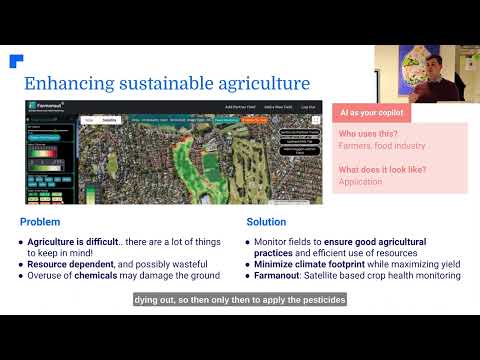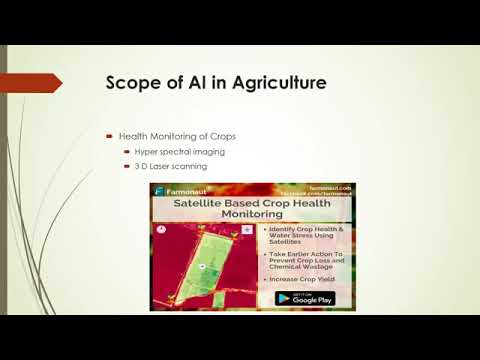7 UK Geoengineering Experiments Transforming Climate Change
Table of Contents
- Introduction: The UK at the Forefront of Geoengineering Climate Change
- What is Geoengineering and Solar Radiation Modification?
- Why the UK is Investing in Geoengineering Climate Change
- Comparison of 7 UK Geoengineering Experiments
- In-Depth Overview: The 7 Transformative Experiments
- Techniques & Methods: From SRM to Cloud Brightening
- Environmental Impact of Geoengineering
- Risks and Unintended Consequences
- Geoengineering in the Global Climate Strategy
- Farmonaut: Technology for a Sustainable Agricultural Future
- FAQ: Geoengineering in the UK
- Conclusion: Navigating the Tipping Points
Introduction: The UK at the Forefront of Geoengineering Climate Change
As the planet advances rapidly along an alarming warming trajectory, the United Kingdom is boldly venturing into the realm of geoengineering climate change. This territory has been both highly anticipated and deeply controversial. By earmarking £50 million for field trials of various solar radiation modification (SRM) technologies, the UK aims to explore and rigorously assess the environmental impact, technique risks, and future viability of reflective and sunlight-modulating interventions.
Taking inspiration from volcanic eruptions and natural aerosols released into the atmosphere, this initiative is being led by the Advanced Research and Invention Agency (ARIA). ARIA’s project is focused on non-toxic, precise interventions, which may become crucial tools for climatic tipping points prevention as we approach a critical century for the Earth’s climate.
Geoengineering projects in the UK emphasize data-driven, science-backed methods, thoroughly weighing the environmental and societal risks before any significant deployment. As we embark on this journey, it is essential to contextualize these experiments, examine their scientific basis, and analyze their impact within the broader spectrum of climate research and policy.
What is Geoengineering and Solar Radiation Modification?
Geoengineering refers to the deliberate modification of the Earth’s environment to combat or reverse the effects of climate change. It encompasses a suite of technologies and methods designed to intervene in natural processes—some of which echo mechanisms witnessed in volcanic eruption climate cooling.
A primary focus in the current UK initiative is solar radiation modification (SRM):
- SRM techniques: Interventions that reflect a portion of incoming sunlight back into space, reducing the warming effect of greenhouse gases.
- Traditional SRM ideas: Include launching reflective particles into the atmosphere, cloud brightening techniques (spraying seawater into the air), or deploying mirrors in space.
- Why it mimics volcanoes: Major volcanic eruptions release aerosols into the stratosphere, temporarily increasing the Earth’s albedo and creating short-term global cooling effects. SRM seeks to replicate this phenomenon in a controlled way without adverse byproducts.
The UK’s bold approach, under the guidance of expert researchers and organizations like ARIA and the Natural Environment Research Council (NERC), is shaped by lessons from historical events and current scientific advances. The emphasis is on robust research, controlled experiments, transparent data sharing, and the utmost caution regarding risks and public concerns.
Why the UK is Investing in Geoengineering Climate Change
The UK’s geoengineering program is motivated by a combination of scientific urgency and the need for practical tools to offset dangerous climate changes beyond mere fossil fuel reduction. Here’s why the UK is stepping up:
- Climatic Tipping Points & Future Viability: Scientists alert us to the proximity of climatic tipping points—crucial thresholds, after which accelerating damage could become irreversible within this century.
- Complementarity and Caution: While dramatic reduction in greenhouse gas emissions remains paramount, modern geoengineering experiments UK may provide an essential backstop. ARIA’s approach is both pragmatic and vigilant, ensuring that Geoengineering does not divert attention from core issues like fossil fuels and ecological restoration.
- Expert Endorsement: Noted figures such as Professor Mark Symes, head of the ARIA program, highlight that “business as usual” warming pathways are inadequate. Hence, the imperative to test new interventions grows stronger every year.
- Global Leadership: With major funding agencies in other nations facing political obstacles, the UK is emerging as a leader in environmentally responsible, transparent, and community-inclusive climate intervention technologies.
As the ARIA initiative and NERC’s research focus on both theoretical modeling and small-scale outdoor experiments, the UK is leveraging every available tool — from advanced simulations to natural analogues (like volcanoes) — to chart a safe, science-first path forward.
Farmonaut’s Carbon Footprinting module empowers agribusinesses and researchers to track and minimize their environmental impact in real-time, ensuring sustainability aligns with innovation.
Comparison of 7 UK Geoengineering Experiments
Below is a comprehensive summary table to help us understand and compare each geoengineering experiment led or funded in the UK. This resource enables direct, side-by-side analysis for researchers, policymakers, and informed citizens. Please note that projections and estimations are based on current research and are subject to revision as more data from field trials becomes available.
| Experiment Name | Technique Type | Estimated Start Year | Projected Environmental Impact | Estimated Risk Level | Cost Estimate (£ millions) | Future Viability |
|---|---|---|---|---|---|---|
| Stratospheric Aerosol Injection Trial | Solar Radiation Modification (SRM) | 2025 | Potential for 2–5% global temp reduction; CO₂ impact indirect |
High | 12 | Moderate |
| Marine Cloud Brightening Demo | Cloud Brightening Techniques | 2025 | Up to 1.5% increased cloud reflectivity locally | Medium | 5.5 | Moderate |
| Reflective Particles Atmospheric Release | SRM / Light Blocking | 2024 | Increased atmospheric albedo (~0.5%) | Medium | 4 | Moderate |
| Aerosol Simulation & Modelling Program | Simulation / Modelling (NERC) | 2024 | Risk-Based Data Analysis; indirect CO₂ | Low | 3 | High |
| Salt Spray Cloud Reflectivity Enhancement | Cloud Brightening Techniques | 2026 | Local temperature drop; weather pattern changes expected | Medium-High | 8 | Low-Moderate |
| Space-Based Solar Filters Feasibility Study | SRM / Blocking | 2025 | Theoretical global temp reduction up to 1% | High | 14 | Low |
| Carbon Sequestration Feedback Investigation | Carbon Capture & Modelling | 2024 | Up to 20,000 metric tons CO₂/yr sequestration modeled | Low-Medium | 3.5 | Moderate |
In-Depth Overview: The 7 Transformative Experiments
Let us dive deeper into each geoengineering experiment currently advancing in the UK, examining the science, expected outcomes, and risks in the context of environmental impact of geoengineering.
1. Stratospheric Aerosol Injection Trial
This project directly draws inspiration from historic volcanic eruptions which, through the injection of aerosols into the stratosphere, have shown to lower global temperatures (volcanic eruption climate cooling). The aim is to mimic this effect with safer, non-toxic particles, carefully measuring the balance of sunlight reduction, global cooling, and potential disruption to local and global precipitation patterns.
- Technique: Releasing reflective sulfate- or sea salt-based particles at high altitude.
- Main Risks: Potential changes in precipitation pattern changes geoengineering, disruptions to agriculture, and possible impacts on ozone chemistry.
- Viability: Considered moderate; more field data needed to refine models and risk assessments.
2. Marine Cloud Brightening Demo
Cloud manipulation offers a less intrusive, albeit complex, geoengineering method. By spraying fine seawater droplets into low-lying cloud formations above the ocean, scientists hope to increase their reflectivity (albedo), sending more solar radiation back into space before it warms the Earth.
- Technique: Utilizing atomizers or specialized drones to disperse nano-scale saltwater droplets at sea.
- Main Risks: Effects can be highly localized; possible disruption of regional weather and precipitation patterns, especially over agricultural belts.
- Viability: Valuable as an experimental tool; large-scale impact projection is moderate but requires continuous monitoring.
3. Reflective Particles Atmospheric Release
This approach aims at light blocking techniques by dispersing custom-developed reflective particles atmosphere to slightly but constantly increase the planet’s ability to deflect sunlight. The intervention is smaller in scale than stratospheric projects but can have significant localized cooling effects.
- Technique: Launching fine mineral-based or engineered particles through controlled, automated balloons or aircrafts.
- Main Risks: Lower risk than stratospheric trials, but smaller-scale deployments could alter local climate zones, requiring careful calibration.
- Viability: Promising for targeted interventions; moderate future scaling potential.
4. Aerosol Simulation & Modelling Program
Instigated chiefly by NERC, this program excludes outdoor deployments but leverages high-precision computer models, historical natural observation data, and analogues from volcanic eruptions to simulate various geoengineering scenarios.
- Technique: State-of-the-art climate modeling, AI, and satellite observation integration; no direct environmental manipulation occurs in these trials.
- Main Risks: Low immediate risk; potential for model error or oversight due to system complexity.
- Viability: Highly viable—creates a foundation for evidence-based environmental policy, risk mitigation, and future outdoor experimentation.
Farmonaut’s Large Scale Farm Management Solutions utilize advanced satellite and AI-driven insights for plantation oversight, resource optimization, and fleet management—empowering farmers, researchers, and administrators with critical information for sustainable planning.
5. Salt Spray Cloud Reflectivity Enhancement
Similar to the marine demo, but with a focus on leveraging reflective salt sprays over key climatic regions, this experiment explores whether regular, widespread dispersal can reduce local temperatures efficiently.
- Technique: Utilizing automated sea vessels or floating platforms to create and spread salt aerosols over vast ocean areas.
- Main Risks: May intensify or shift precipitation; could affect weather patterns important to global food production.
- Viability: Still low-moderate; disrupts local-to-regional systems more than global climate. Large-scale modeling and pilot deployments are underway to collect crucial data.
Farmonaut’s Fleet Management module
enables precise, AI-assisted logistics and machinery monitoring—important for environmental research projects and agricultural partners adapting to geoengineering-led weather shifts.
6. Space-Based Solar Filters Feasibility Study
This innovative, mostly theoretical project is examining the logistics, costs, and likely effectiveness of deploying thousands of small, reflective solar filters (mirrors or meshes) in near-Earth orbit.
- Technique: Evaluating space launches, positioning, and remote operation/control for optimal sunlight interception.
- Main Risks: Cost, technical feasibility, and risk of space debris; unknown long-term consequences for satellite traffic and astronomy.
- Viability: Currently low; will become more practical as orbital deployment technology advances.
7. Carbon Sequestration Feedback Investigation
While focused on carbon capture rather than direct SRM, this program analyzes how geoengineering interventions could interact with biological carbon sinks—such as forests, oceans, and peatlands—both enhancing and potentially destabilizing them.
- Technique: Modeling the impacts of temperature and precipitation changes on natural carbon sequestration systems post-intervention.
- Main Risks: Uncertain feedbacks; rapid cooling could cause stress to delicate ecosystems or disrupt agriculture cycles.
- Viability: Useful as a companion to direct SRM trials; may uncover synergies or hidden risks in combined mitigation strategies.
Farmonaut’s Crop Loan and Insurance Support
aids financial verification for farmers adjusting to volatile weather patterns, ensuring crops and livelihoods are better protected as climate interventions proceed.
Techniques & Methods: From SRM to Cloud Brightening
Each geoengineering experiment in the UK utilizes one of several cutting-edge techniques designed to alter the climate system. Core methods under review include:
- Solar Radiation Modification (SRM): Implemented chiefly by reflective particles atmosphere techniques and high-altitude aerosols meant to block light before it reaches the Earth’s surface.
- Cloud Brightening Techniques: Whether using seawater sprays or salt aerosols, the goal remains the same: make clouds more reflective so a larger portion of solar radiation is returned to space—cutting the warming effect in the process.
- Space-Based Interventions: The long-term goal is to test the feasibility and scalability of controlling planetary albedo from orbit, a strategy that could one day form part of a multi-pronged climate intervention technologies response.
- Controlled Modeling and Data Analysis: UK research agencies place great importance on simulations, predictive data analysis, and learning from the environmental legacy of volcanic eruptions—recognizing the risk of unknown consequences and the necessity of sound data.
With Farmonaut’s Blockchain-based Traceability tools, organizations can track every agricultural input used during climate research projects, ensuring transparency, compliance, and trust across the entire supply chain.
Environmental Impact of Geoengineering
Assessing the environmental impact of geoengineering remains at the heart of every UK project. All proposed or ongoing experiments include a rigorous environmental impact assessment (EIA), built on the following pillars:
- Modeling Expected Consequences: Using predictive tools to map the extent of cooling, precipitation pattern changes geoengineering might cause, and implications for ecosystems and human activities.
- Consultations with Local Communities: Engaging those on the ground ensures local knowledge and concerns are factored into experiment design, especially where agriculture or biodiversity might be affected.
- Prioritizing Non-Toxic Approaches: Unlike older, riskier proposals, the current ARIA program explicitly forbids deploying substances with proven toxicity or hazardous persistence.
- Continuous Data Collection: Ongoing remote sensing and field monitoring, including the use of satellites, help adjust techniques and clarify consequences as new data emerges.
All UK geoengineering experiments are underpinned by the scientific method, transparent oversight, and adaptive management frameworks. Ongoing NERC research uses real-world analogues and scenarios to reduce model uncertainty and minimize risk.
Risks and Unintended Consequences: SRM, Agriculture & Global Systems
Every climate intervention introduces the possibility of unintended consequences. Some of the primary risks the UK’s advanced research and programs are preemptively analyzing include:
- Disrupted Precipitation Patterns: SRM techniques (especially stratospheric aerosols) can shift global rainfall, threatening agricultural productivity and water security. Precipitation pattern changes geoengineering is a persistent concern for food producers and rural communities.
- Ecological Shifts: Altering temperature and sunlight can stress or benefit some organisms more than others, potentially unbalancing delicate natural ecosystems or fostering new pests and diseases.
- Moral Hazard: Heavy focus on geoengineering might delay crucial efforts to reduce fossil fuels, improve energy efficiency, and protect biodiversity. The ARIA and NERC stance is to keep geoengineering as a complement, not a substitute.
- Cross-Border and Global Risks: Atmospheric modifications in the UK may have ripple effects for weather and agricultural systems globally, reiterating the need for international standards, open data, and robust impact assessment.
By layering these concerns with the benefits of rapid cooling or carbon sequestration, ARIA researchers seek a balanced pathway that foregrounds safety, transparency, and public trust.
Geoengineering in the Global Climate Strategy
The UK’s current leadership in geoengineering climate change aligns with a broader need for innovative, responsibly managed climate intervention technologies. As major nations deliberate or reduce funding due to political resistance, the UK is uniquely positioned to:
- Build Evidence Through Data: Monitoring real-world field data from controlled interventions to underpin global recommendations.
- Promote Multilateral Oversight: Working transparently outside exclusive international agreements, UK research enables others to learn and contribute without geopolitical restriction.
- Develop Dual Approaches: Combining geoengineering with deep decarbonization (including fossil fuel reduction) offers the best odds of averting catastrophic climatic tipping points prevention.
While debates among scientists and experts continue, public engagement, ethical frameworks, and ongoing assessment remain at the forefront of UK decision-making regarding large-scale deployments.
Farmonaut’s AI-Powered Crop Plantation and Forest Advisory delivers real-time, science-based recommendations, critical for adapting agricultural practices to newly engineered climatic conditions.
Farmonaut: Technology for a Sustainable Agricultural Future
It is vital to recognize how advancements outside geoengineering can support adaptation and resilience in a changing climate. Farmonaut offers a cutting-edge platform for agricultural monitoring and resource management as environments and precipitation regimes become less predictable.
- Satellite-Based Crop Health Monitoring: Providing near real-time, AI-analyzed data on vegetation, soil moisture, and field anomalies, enabling farmers to refine irrigation, pest intervention, and fertilizer use.
- AI Advisory Systems: Jeevn AI supports farmers with custom weather, crop health, and resource allocation insights—hugely valuable as experiments and climate interventions alter local growing conditions.
- Blockchain Product Traceability: Bringing end-to-end traceability into complex food and raw material supply chains—especially relevant for sustainability certifications and consumer trust.
- Environmental Resource Management: By monitoring carbon outputs and resource use (carbon footprinting), Farmonaut empowers producers to lower their impact, even as systemic climate change demands new responses.
Interested in integrating remote sensing and climate data into your own systems or research? Farmonaut API provides satellites, weather, and crop monitoring endpoints for advanced modeling and analysis. See the Developer Docs for details.
FAQ: Geoengineering in the UK
What is geoengineering climate change?
Geoengineering climate change refers to the deliberate large-scale intervention in Earth’s climate systems—such as with solar radiation modification (SRM) or carbon capture—to counteract global warming and mitigate harmful effects of greenhouse gas emissions.
What does solar radiation modification involve?
Solar radiation modification focuses on reflecting a portion of the sun’s rays back into space using various techniques. In the UK, SRM experiments include releasing reflective aerosols, cloud brightening, and studying theoretical space-based solar filters.
What are the main risks of geoengineering?
Major risks include unintended changes to precipitation patterns (which can affect agriculture and water supply), potential ecological disruptions, insufficient modeling of cross-border effects, and the concern that these interventions may reduce pressure to cut fossil fuel emissions.
How does the UK ensure community and environmental safety?
Projects must undergo thorough environmental impact assessments and community consultations before any significant deployment. Only non-toxic, carefully monitored materials are considered, and experiments are scaled up slowly based on comprehensive field data.
Will geoengineering replace emission reduction efforts?
No. British research agencies insist that geoengineering can only complement—not replace—efforts to reduce fossil fuel use and achieve net zero. Responsible deployment will always prioritize direct emission cuts and ecological restoration.
How can stakeholders track and adapt to geoengineering impacts?
Digital tools like Farmonaut provide real-time, field-level data and support for environmental tracing, risk management, and resource allocation. This enables both adaptation and mitigation as climates and agricultural realities evolve.
Conclusion: Navigating the Tipping Points Together
The UK and its agencies stand at the vanguard of geoengineering climate change, combining technological daring with rigorous scientific oversight and a deep commitment to sustainability. These experiments—from solar radiation modification to advanced modeling—each contribute irreplaceable evidence for policymakers and communities confronting the uncertainties of tomorrow.
For the world’s farmers, researchers, and sustainability leaders, tools that deliver actionable insights and transparency are more critical than ever. Farmonaut empowers the agricultural sector to thrive even amidst engineered or naturally shifting climates, ensuring that food systems, supply chains, and rural livelihoods remain resilient and sustainable.
As we collectively face the challenge of climate change, the best path blends innovative geoengineering with uncompromising emission reductions—leveraging data, foresight, and collaboration to secure the planet’s future for generations to come.








